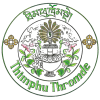Background
Bhutan’s urban areas are experiencing rapid population growth and increasing vehicle ownership. Between 1990 and 2010, the urban population nearly tripled, and Thimphu, with 127,864 residents, remains the largest urban center, accounting for 17% of the national population and 41% of the urban population.
Vehicle numbers have been growing at 9-10% annually, with over 96,307 registered vehicles as of June 2018. Taxis and personal vehicles dominate transport, limiting options for lower-income households and challenging Bhutan’s carbon-neutral commitment. To address these issues, the Royal Government of Bhutan (RGoB) introduced the Bhutan Transport 2040 Integrated Strategic Vision, emphasizing sustainable urban transport with a focus on public transport and pedestrian-friendly cities.
Since 1999, the government has worked to improve public transport, starting with the City Bus Service under the Bhutan Postal Corporation. While the service has expanded to 46 buses carrying 8,000 passengers daily, it remains insufficient. In 2020, the City Bus Service was transferred to Thimphu Thromde, with a commitment to add 24 new buses to enhance urban mobility.
Project Implementation & Goals
Currently, walking and taxis remain the primary urban transport modes, but increasing private vehicle use worsens traffic congestion and reduces the attractiveness of public transport. To ensure efficient, safe, and reliable mobility for Thimphu’s residents, a strategic intervention is necessary.
The Bhutan Green Transport Project aims to introduce a high-quality bus priority service along a key corridor in Thimphu and pedestrianize part of a main boulevard in the city center. These initiatives will:
- Improve accessibility to economic and social opportunities
- Provide reliable, safe, and environmentally friendly public transport
- Reduce congestion, noise, and air pollution
- Enhance urban safety and encourage a shift toward sustainable mobility
- Component 1—Priority bus service infrastructure, fleet, and systems. This component will finance the development of the 16 km priority bus service corridor along Thimphu’s north-south axis (Babesa to Dechencholing). The characteristics of the service (grade separated, priority lane, supporting traffic management measures, etc.) will be determined during project preparation. Provisionally, the interventions are expected to include road infrastructure (including cycling and pedestrian pathways), vehicles, and an Intelligent Transport Systems (ITS). For the vehicle fleet, different bus technologies will be assessed to select an environmentally friendly technology suitable for the context of Thimphu. The ITS is expected to include, Automatic Vehicle Location System, Passenger Information System, and Automated Fare Collection.
- Component 2—Pedestrianization of Norzin Lam, for which the Urban Design is already prepared. This component will finance the pedestrianization of Phase 2 and Phase 3 of Thimphu’s main 1.3 km boulevard known as Norzin Lam (Phase 1 will be implemented by RGOB during 2020 using own funds). This will allow priority for pedestrian access along Thimphu’s main business district and is expected to decongest the city center. Norzin Lam is envisaged as exclusively for pedestrian and non-motorized traffic during peak hours with vehicle traffic to support businesses allowed only during defined morning or late evening hours (with exceptions made for emergency vehicles, disability access, public service vehicles, and possibly buses). There are two parking garages close to Norzin Lam, an assessment of whether these would suffice as an alternative parking option for Norzin Lam will be evaluated during project preparation and suitable additional alternative parking options identified as needed; and
- Component 3—Capacity Development. This component will finance goods purchase, consultancies, and trainings for institutional strengthening for the operation of the Priority Bus Service. The technical assistance provided through this component may include administrative and financial management aspects of the Priority Bus Service, study of alternative enforcement measures, training to operators and drivers, and better user information systems. This component will also finance a communication campaign to promote the Priority Bus Service and modern public transport in Thimphu.
The RoGB has received project preparation funding from the Green Climate Fund (GCF) and Korea-World Bank Group Partnership Facility (KWPF), administered by the World Bank, to fund the preparatory activities covering the above three components for consultancy services.
The Objective of the Assignment
- The primary objective of the assignment is to assess the technical, economic, financial, environmental and social viability of the introduction of a high-quality bus priority service (low carbon transport concept) along the main north-south corridor (Babesa to Dechencholing), and the pedestrianization of Norzin Lam, in Thimphu.
- More specifically, the proposed project interventions are expected to encompass the following:
Grievance Redress Service (GRS)
The GRS is an avenue for individuals and communities to submit complaints, comments, queries, feedback, etc directly to the Project Implementing Unit (PIU) in TT, if one believe that the project has or is likely to have adverse effects on them, their community, or their environment. The GRS enhances the PIU’s responsiveness and accountability to project-affected communities by ensuring that grievances are promptly reviewed and addressed.
You may also file your complaint through the online form: Click Here
. If you experience any difficulties in
completing the form and need assistance, please contact us at kdorji@thimphucity.gov.bt.
